MAZDA RANKS KIWI DRIVERS AS PRIORITY CUSTOMERS FOR CX-9, WRITES COLIN SMITH
Thanks to a merging of technologies the new Mazda CX-9 needs to make fewer petrol station visits while driving with the muscular torque characteristics similar to a modern diesel.
Clever new turbo technology is among the multi-layered talents of the new CX-9, which is set to give Mazda a new luxury flagship as well as a compelling large SUV segment contender.
The third element of the CX family sits above the hot-selling CX-3 and CX-5. It will deliver seven-seat accommodation, new powertrain technology and upgraded safety features as well as significantly boosted luxury content and finish quality when it launches in New Zealand from October 1.
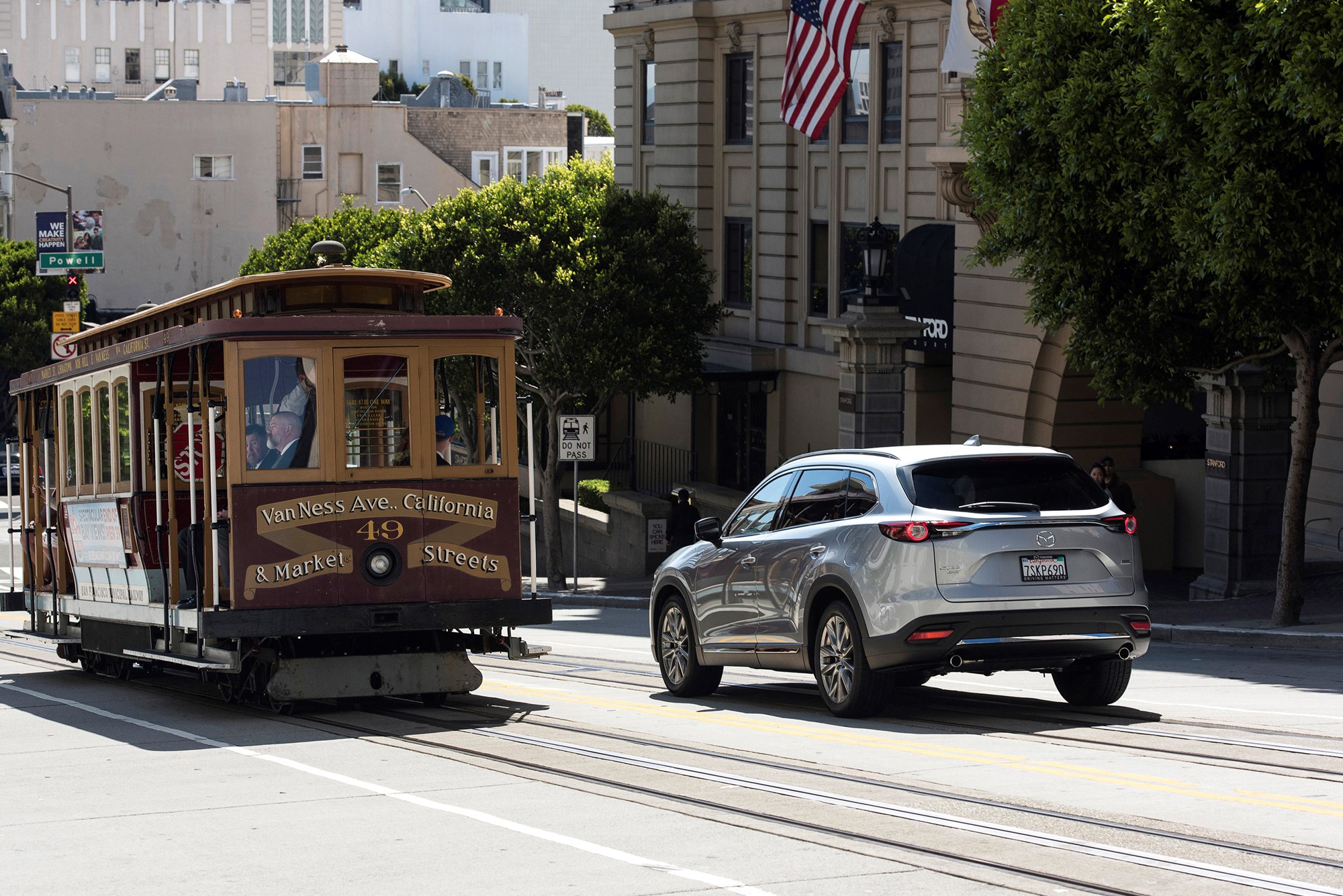
This time Mazda New Zealand is getting an early start with the CX-9.
The previous generation was added to the local line-up several years into its global model cycle, but now New Zealand ranks among priority markets with a launch that follows within months of North America (where 80 per cent of CX-9 production will be sold) and Australia.
The CX-9 is regarded as the seventh (and final) member of Mazda’s sixth generation vehicle range — all built on the full application of the SkyActiv technology efficiency drive and distinguished by the ‘‘Kodo’’ design language.
Mazda New Zealand will launch a front-wheel-drive GSX grade and all-wheel-drive GSX and Limited models. Pricing won’t be announced until September but the target is to position the three variants between $55,000 and $65,000.
Initially sales are likely to be supply-constrained, starting out at 300-350 units in the first 12 months and rising to an annual sales rate of about 500 units as production ramps up.
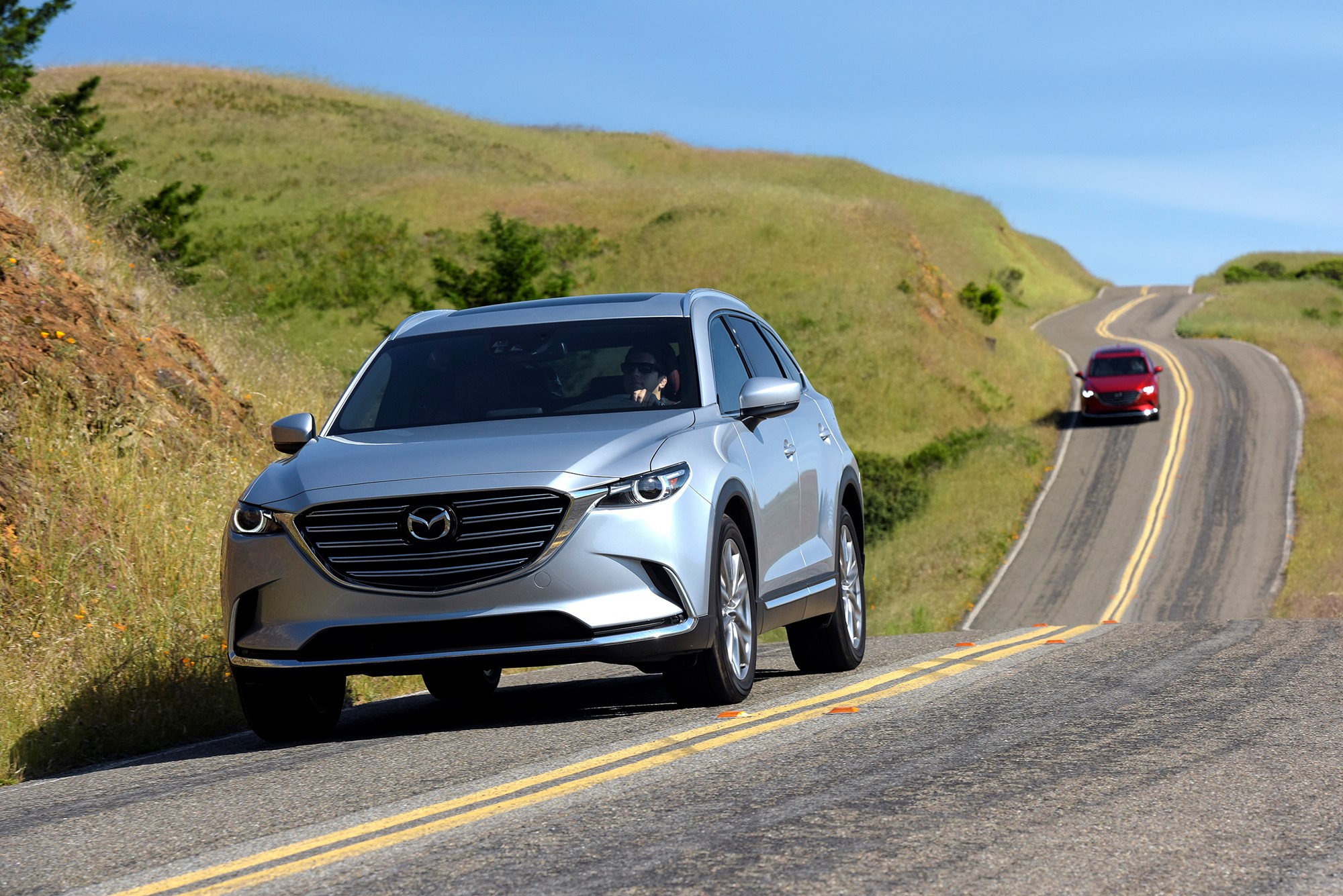
Driven took an early drive of the new CX-9 as part of the San Francisco-based North American press launch last week. Our drive route, heading across the Golden Gate Bridge, put the CX-9 on the city streets, freeways and sweeping coastal roads on a run to Bodega Bay — scene of Alfred Hitchcock’s The Birds.
Mazda engineers haven’t merely replaced the thirsty 3.7-litre V6 of the previous generation with a turbocharged version of the 2488cc four-cylinder petrol engine you’ll find in Mazda3, Mazda6 and CX-5 models.
The development priority was “real world” gains in fuel consumption, throttle response and flexibility. The outcome is different to what might be suggested when a 204kW naturally aspirated V6 is replaced by a four-cylinder turbo unit developing 170kW.
On the road the displacement and kilowatts quickly seemed irrelevant and it’s the arrival of 420Nm of turbo torque from just 2000rpm — rather than 376Nm of the peaky V6 variety — that defines the performance of the CX-9.

The throttle response of the SkyActiv-G 2.5T engine mimics substantially larger displacement and more cylinders.
Uphill runs and acceleration gave little indication of a turbocharger at work with the fast-rising torque curve being diesel-like and able to prompt deceptively brisk part-throttle acceleration.
The new engine is paired to the high-torque version of the SkyActiv-Drive six-speed automatic transmission with an extended lock-up range. With reduced weight also part of the recipe, the 0-100km/h acceleration times are improved from 9.9secs to 8.2secs for the front-drive models and from 10.1secs to 8.6secs for the CX-9 AWD.
Fuel consumption numbers have also been slashed.
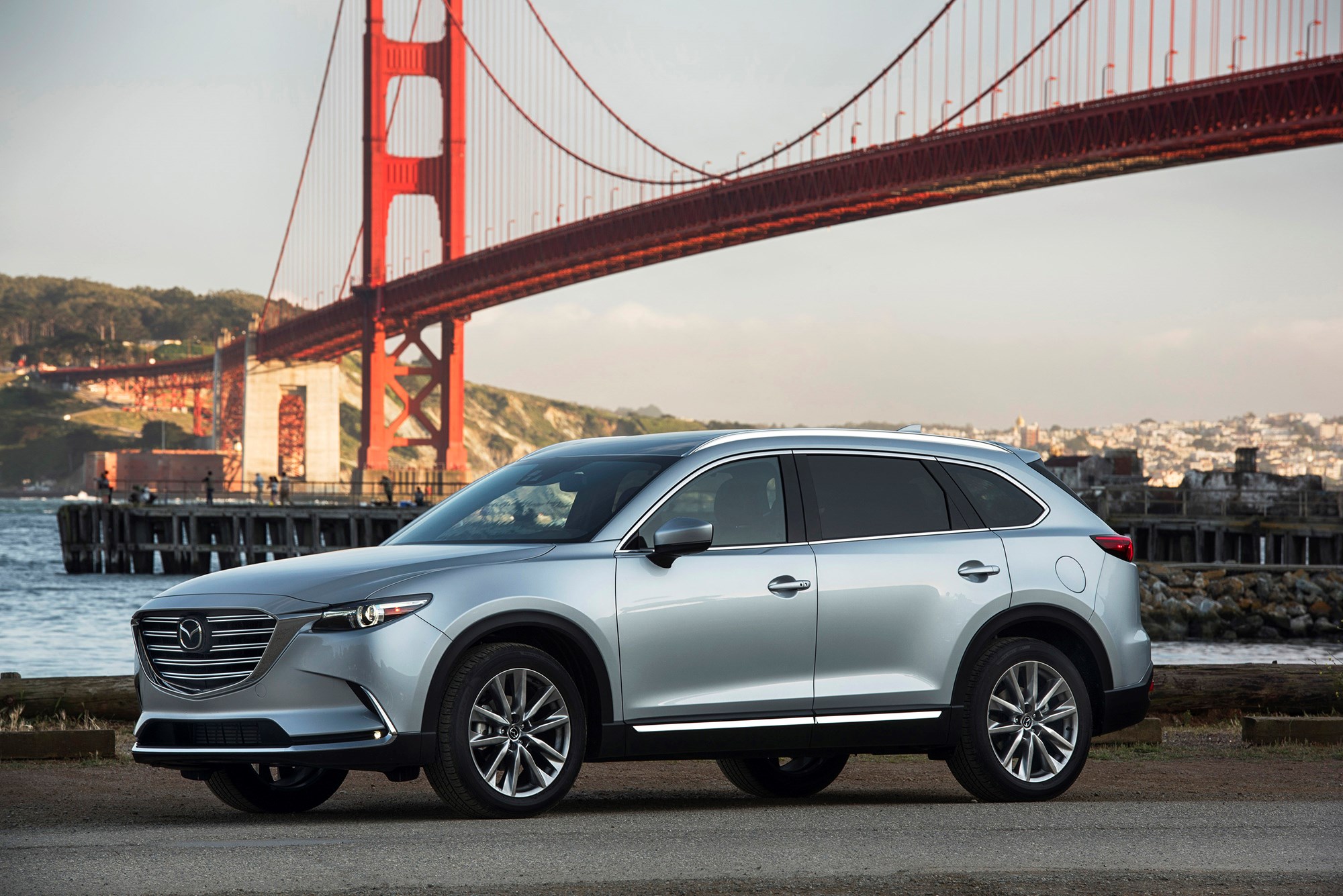 The thirsty V6 model was rated at 11.0L/100km in front-drive format and 11.2L/100km for the AWD model. The figures are 8.4L/100km and 8.8L/100km respectively for the new turbo model.
The thirsty V6 model was rated at 11.0L/100km in front-drive format and 11.2L/100km for the AWD model. The figures are 8.4L/100km and 8.8L/100km respectively for the new turbo model.
The new engine sets the tone for the rest of the low-effort driving experience. Mazda has achieved a Lexus-like quality to the CX9s noise suppression and the impressive refinement should separate it from similarly priced mainstream rivals.
It has pleasing driver appeal for a large SUV, and on the twisting Pacific coast roads the CX-9 displayed accurate steering feel with a combination of wide tyre cornering grip and all-wheel-drive poise matched by comfortable ride compliance and taut body control.
Two aspects of the CX-9 experience were left unanswered by the California drive.
All of the cars on the press programme and all of the photography shows the CX-9 on 20-inch alloy wheels. I’ve yet to see how the car looks on the 18-inch alloys that will be standard on GSX models.
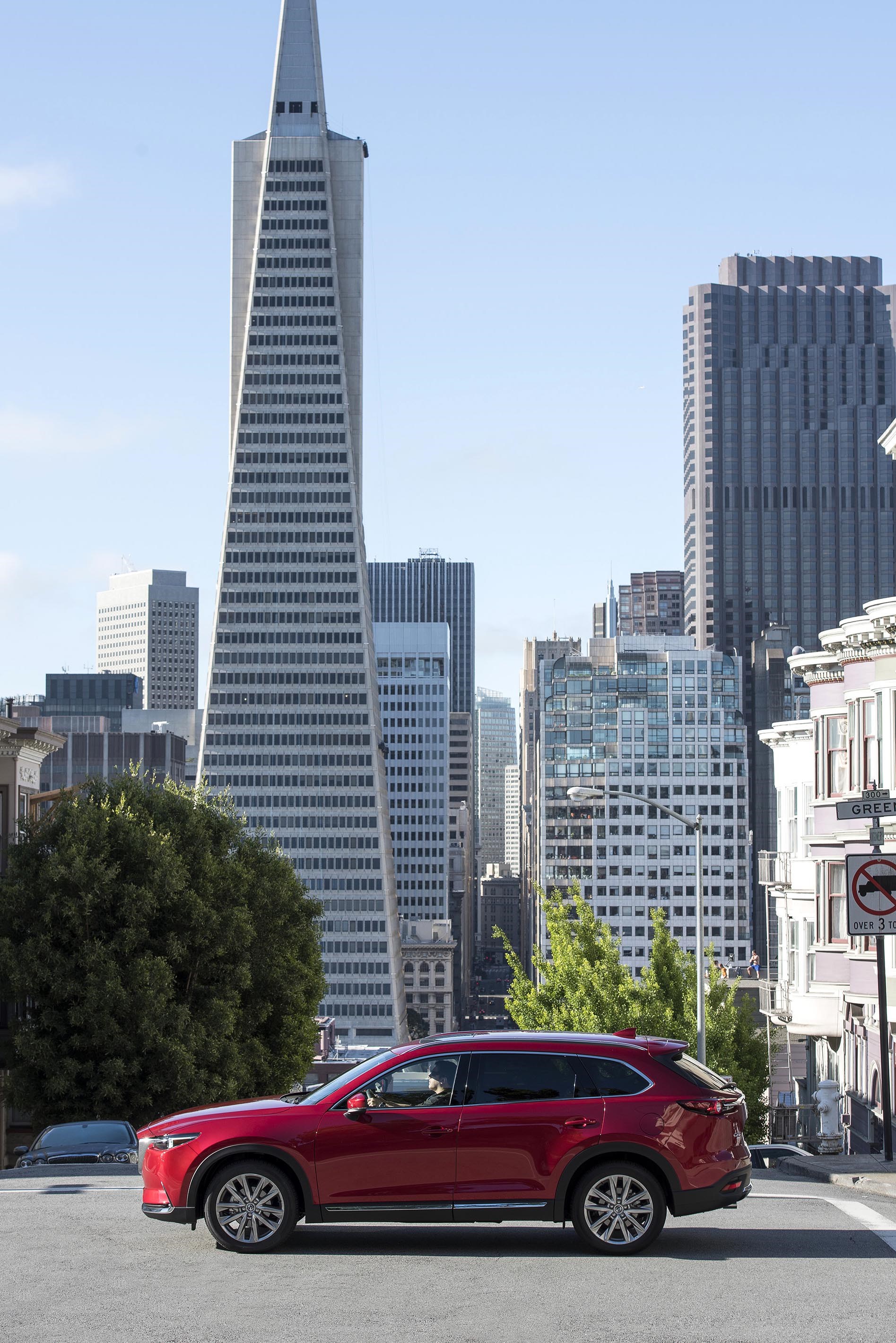 And the full luxury of North America’s Signature grade flagship doesn’t carry over to the local Limited models.
And the full luxury of North America’s Signature grade flagship doesn’t carry over to the local Limited models.
New Zealand will get a black leather seat trim as standard (with a lighter stone option for the Limited) rather than the brown soft nappa leather I was seated in last week.
The genuine woodgrain centre console highlights will be replaced with aluminium detailing.
The black leather and aluminium trim is a safer bet in the New Zealand market.
The detail of the new CX-9 reveals it occupies a fraction less parking space than its predecessor.
While the wheelbase has been stretched by 55mm (to 2930mm) the overall length is reduced by 31mm (now 5075mm). The body is 33mm wider at 1969mm and the height has been reduced by 12mm.
The A-pillars have been moved back by 100mm so the bonnet becomes more prominent and the silhouette less like an MPV.
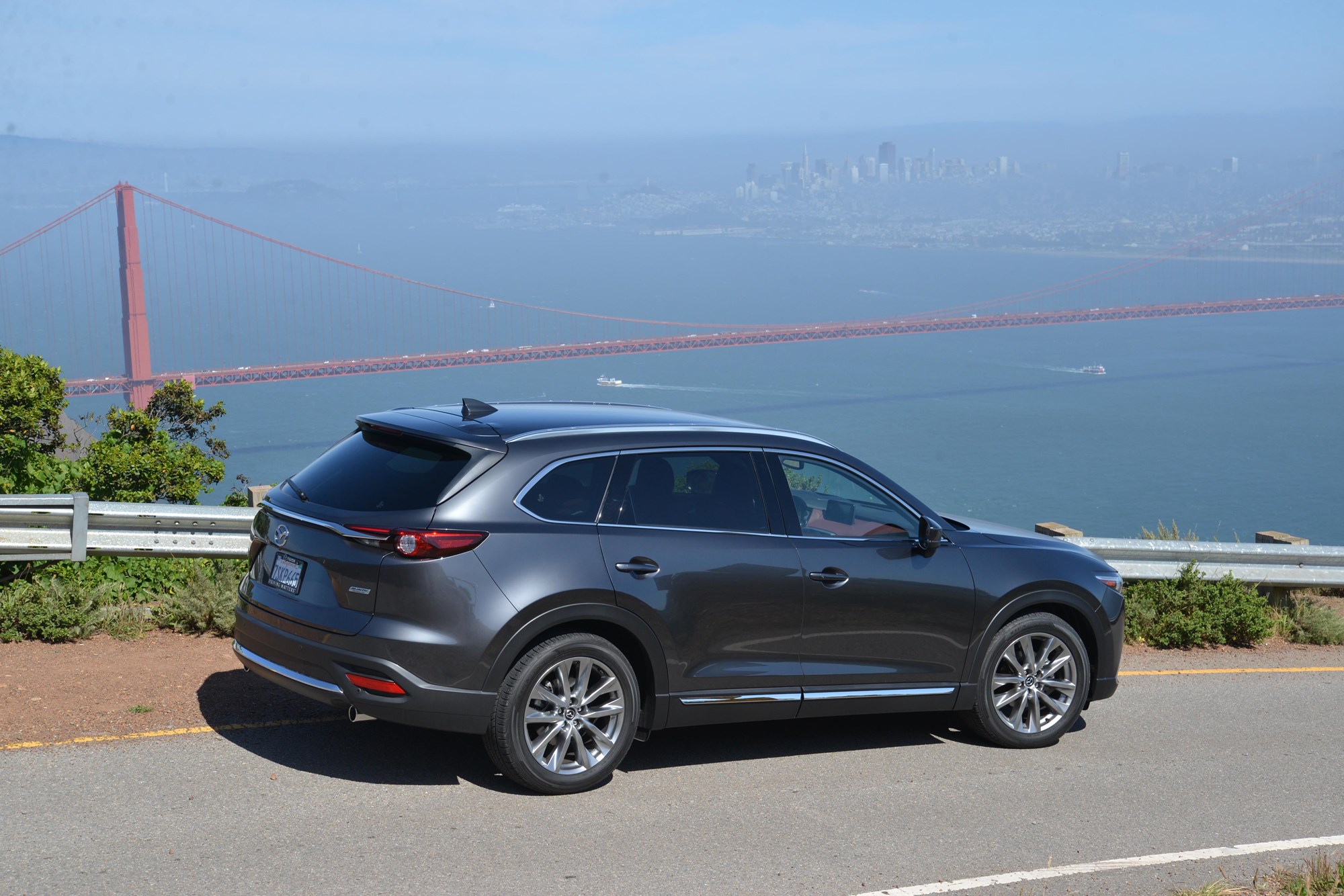
The mirrors are mounted to the doors rather than the A-pillar which improves visibility.
The prominent five-point grille appears to be separated from the car and plunges to a deep centre point while slim headlights and sculpted air intakes are other features of the frontal design.
Cabin space is a question of trade-offs with gains in front head room and leg room, more third row knee room but slightly reduced shoulder room and second row knee room.
Increased use of high tensile steel provides the basis for a significant weight reduction and increased bodyshell stiffness. Front-drive models are 124kg lighter while a new all-wheel-drive system is lighter than its predecessor and achieves a 142kg weight reduction.
Towing capacity remains unchanged at 2000kg for both models.
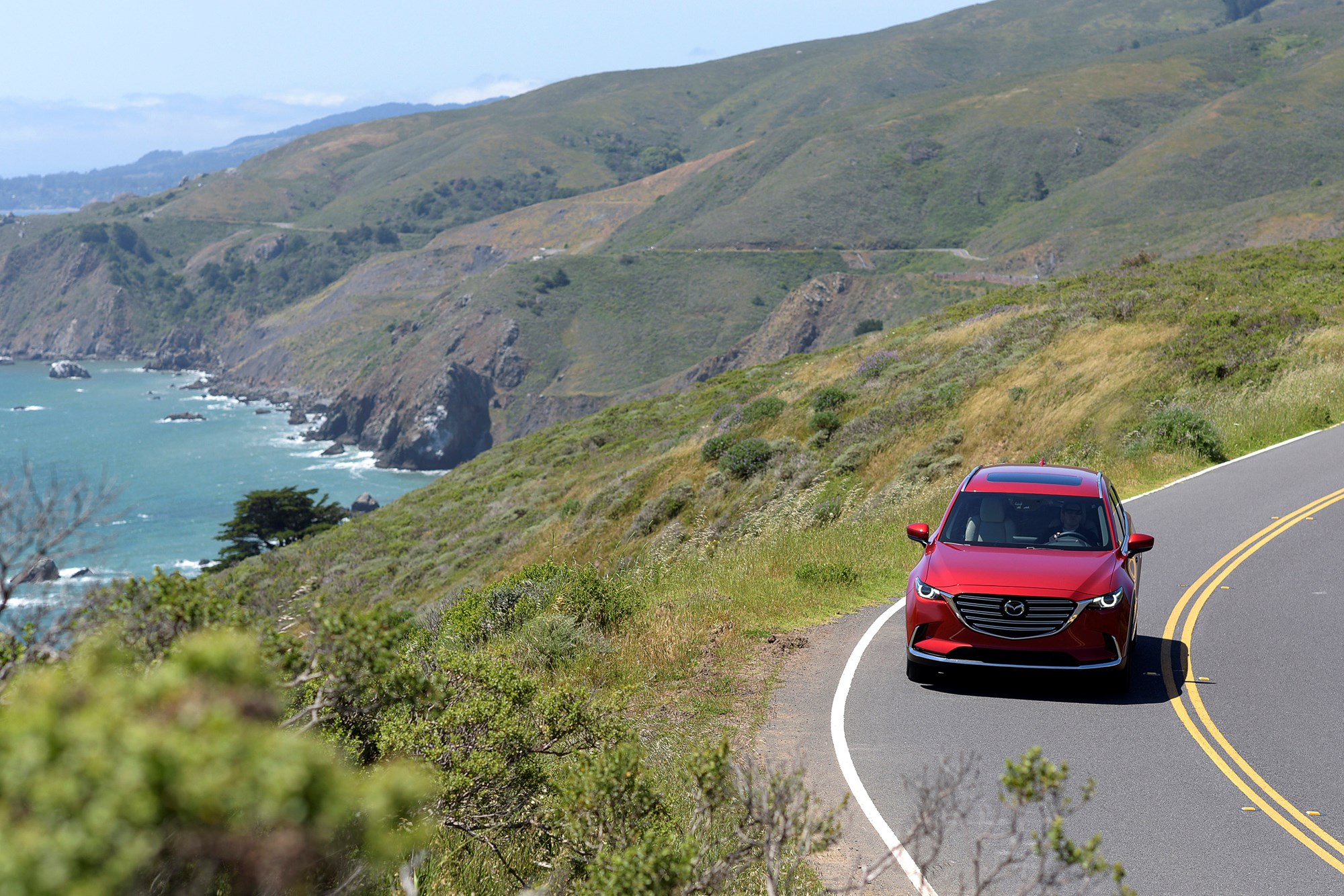 In recent years Mazda New Zealand has been achieving a large chunk of its sales success with mid-grade GSX models.
In recent years Mazda New Zealand has been achieving a large chunk of its sales success with mid-grade GSX models.
The likely mid-$50K entry point for the CX-9 GSX would suggest more success.
The GSX equipment level will deliver leather seats, three-zone climate air conditioning, rain sensor wipers and auto headlights, a reversing camera, satellite navigation, cruise control, power adjustable and heated front seats plus keyless entry and ignition. The GSX model will have 18-inch alloy wheels with 255/60 R18 tyres.
The MZD Connect infotainment system is standard with 8-inch touchscreen and commander dial.
On GSX models the i-ActivSense safety roster provides Blind Spot Monitoring and Rear Cross Traffic Alert plus the Smart City Brake Support System, Hill Start Assist, Trailer Sway Control and Roll Stability Control as standard.
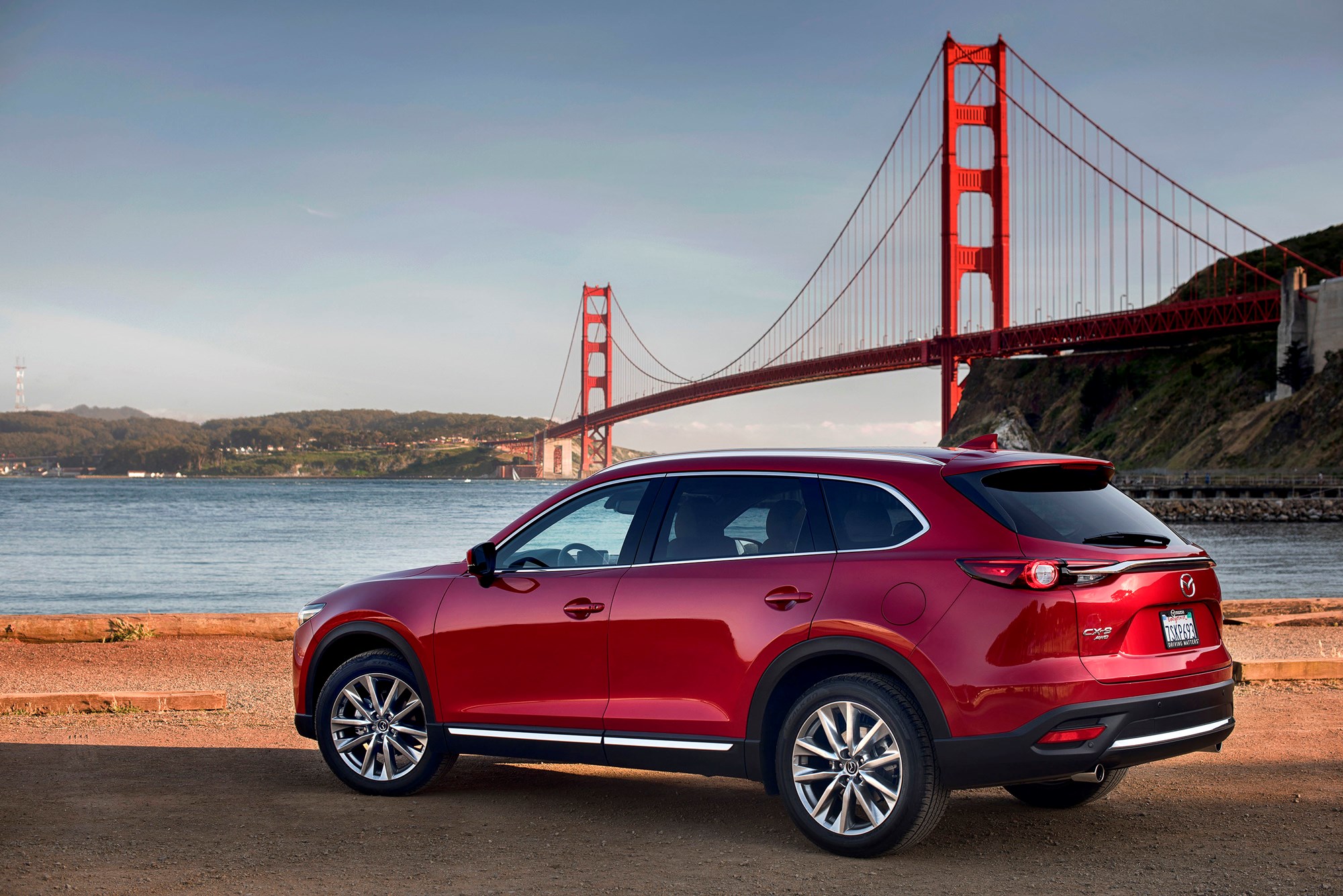 Identifiers for the Limited AWD model are the 20-inch alloy wheels with 255/50 R20 tyres along with adaptive LED head lights, LED daytime running lights, LED tail lamps, a sunroof and privacy glass.
Identifiers for the Limited AWD model are the 20-inch alloy wheels with 255/50 R20 tyres along with adaptive LED head lights, LED daytime running lights, LED tail lamps, a sunroof and privacy glass.
The Limited is also boosted by a powered tailgate, rear door sun shades, driver’s seat memory function and advanced proximity locking and entry system.
A 294-watt Bose premium audio with 12 speakers and a Head-Up display are highlights of the CX-9 Limited and the i-ActivSense safety package gets further enhanced by Radar Cruise Control with Smart Brake Support, Lane Departure Warning, Lane Keeping Assist and Driver Attention Alert.
It will be a comprehensive specification at the GSX level while the flagship CX-9 Limited sees Mazda taking a significant step up the premium car foodchain.















